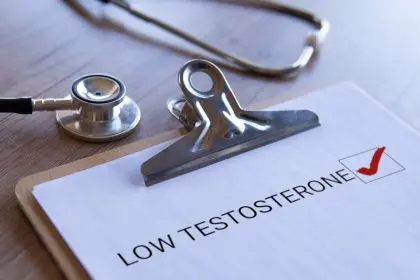We’ve all encountered them – those seemingly magical individuals who devour enormous meals, skip exercise, and somehow maintain the same slim physique year after year. While many of us monitor calories and struggle with weight fluctuations, these naturally thin people appear immune to weight gain regardless of lifestyle habits.
Far from being merely lucky, science reveals that several biological mechanisms explain this phenomenon. Understanding these differences might reshape how we think about weight management and body composition.
Here’s what research tells us about why some people remain effortlessly thin while others don’t.
1. Genetic blueprints favor leanness
The genetic lottery plays a significant role in determining how easily someone gains or loses weight. Research into the genetics of naturally thin individuals has uncovered several key factors that predispose certain people to remain lean regardless of their environment.
Specific genes influence everything from appetite regulation to fat storage efficiency and metabolic rate. The FTO gene, often called the “obesity gene,” appears in variant forms that can predispose people either toward or away from weight gain. Those with certain protective variants may naturally consume fewer calories without conscious effort simply because their hunger and satiety signals function differently.
Another genetic factor involves the AMY1 gene, which determines how many copies of the amylase enzyme someone produces. This enzyme begins breaking down carbohydrates in the mouth. People with more copies of this gene can process carbohydrates more efficiently, potentially reducing the likelihood that those calories will be stored as fat.
Perhaps most intriguing is the newly discovered ALK gene, which appears to prevent weight gain even in overeating conditions. Research in flies, mice, and human samples shows that inhibiting this gene allows subjects to eat high-calorie diets without gaining the expected weight.
While no single “skinny gene” exists, the combination of multiple genetic factors creates a blueprint that makes staying thin significantly easier for some people. These individuals aren’t necessarily making better choices – their bodies are processing and responding to food differently at a fundamental level.
2. Their metabolic engines run differently
Metabolism – the complex biochemical process of converting food into energy – varies substantially between individuals, even those of similar size, age, and gender. Naturally thin people often possess certain metabolic advantages that work in their favor.
Basal metabolic rate (BMR) represents the calories required to keep your body functioning at rest. This accounts for about 60-70% of total daily energy expenditure for most people. Research shows that some individuals have naturally higher BMRs, burning more calories even when completely sedentary.
Beyond baseline metabolic rate, some people experience greater thermal effects from food consumption. When we eat, our bodies use energy to digest, absorb, and process nutrients – a phenomenon called diet-induced thermogenesis. Naturally thin individuals often experience heightened thermogenic responses, essentially “wasting” more calories as heat during digestion rather than storing them.
Non-exercise activity thermogenesis (NEAT) represents another crucial metabolic difference. This encompasses all movement that isn’t formal exercise – fidgeting, pacing, standing, and other subtle activities. Studies show that naturally thin people tend to have substantially higher NEAT levels, sometimes burning hundreds of additional calories daily through these unconscious movements.
Brown fat activity presents another metabolic advantage in some naturally thin individuals. Unlike white fat that stores energy, brown adipose tissue burns calories to generate heat. People with more active brown fat deposits expend more energy maintaining body temperature, particularly in cooler environments.
Interestingly, these metabolic differences often persist even when naturally thin people gain some weight. Their bodies typically ramp up energy expenditure in response, making long-term weight gain difficult.
3. Their gut microbiomes extract fewer calories
The trillions of microorganisms inhabiting our digestive tracts do more than just help with digestion – they influence how many calories we extract from food and how those calories affect our bodies. Research increasingly shows that gut microbiome composition differs significantly between naturally thin and weight-gain-prone individuals.
Certain bacterial profiles appear more efficient at extracting energy from food, particularly from complex carbohydrates. Someone with “efficient” gut bacteria might absorb more calories from the same meal compared to someone with a different microbiome composition. Naturally thin people often host bacterial communities that extract fewer calories from identical foods.
Beyond calorie extraction, gut bacteria influence metabolism through the production of short-chain fatty acids and other compounds that affect insulin sensitivity, inflammation, and fat storage mechanisms. The microbiome also impacts hunger hormones and satiety signals, potentially explaining why naturally thin people often naturally eat only until satisfied without conscious effort.
Twin studies provide compelling evidence for microbiome influence. When researchers transplanted gut bacteria from identical twins where one was thin and one obese into mice, the mice receiving bacteria from the thin twin remained lean despite eating the same diet as the mice receiving bacteria from the obese twin, who gained significant weight.
The gut-brain connection further complicates this picture, as certain bacterial compositions appear to influence brain regions involved in appetite regulation and reward sensitivity. This means some people experience less food cravings and derive less reward from calorie-dense foods due to their gut bacterial composition.
4. Their hormonal signals function optimally
Hormones serve as chemical messengers that coordinate virtually every aspect of metabolism, hunger, and weight regulation. Naturally thin individuals often display hormonal profiles that favor leanness and prevent overconsumption.
Leptin, the primary satiety hormone produced by fat cells, signals fullness to the brain. Many people develop leptin resistance, where the brain becomes less responsive to this signal, leading to continued hunger despite adequate energy stores. Naturally thin people typically maintain greater leptin sensitivity, allowing their brains to accurately recognize when they’ve consumed sufficient calories.
Ghrelin, commonly known as the hunger hormone, stimulates appetite and promotes fat storage. Research shows that naturally thin people often produce less ghrelin throughout the day and experience more rapid suppression of this hormone after eating. This results in naturally lower appetites and faster satisfaction from smaller portions.
Insulin sensitivity plays another crucial role in maintaining leanness. This hormone directs glucose into cells for energy use or storage. Naturally thin individuals typically exhibit superior insulin sensitivity, meaning their bodies require less insulin to process the same amount of carbohydrates. With lower insulin levels, their bodies remain in fat-burning rather than fat-storage mode more frequently.
Thyroid hormones regulate metabolic rate throughout the body. Some naturally thin people maintain slightly higher levels of active thyroid hormones, boosting their baseline calorie burn. Even small differences in thyroid function can significantly impact long-term weight maintenance.
The endocannabinoid system, which influences appetite and food enjoyment, often functions differently in naturally thin individuals. They may experience less intense food cravings and derive less reward from overconsumption, making it easier to eat only until satisfied rather than beyond fullness.
5. Their fat cells behave differently
Not all fat tissue functions the same way. Research increasingly shows that the behavior and characteristics of fat cells themselves differ substantially between naturally thin people and those prone to weight gain.
Fat cell number gets established primarily during childhood and adolescence, with naturally thin people often developing fewer total adipocytes (fat cells). While these cells can expand significantly in size, having fewer cells overall limits maximum fat storage capacity.
Additionally, adipocyte expandability varies between individuals. Some people’s fat cells readily expand to store excess energy, while naturally thin people often have limited fat cell expandability. When their fat cells reach capacity, metabolic signaling changes to resist further energy storage.
Differences extend to fat cell types and distribution. Subcutaneous fat, stored just beneath the skin, behaves differently than visceral fat surrounding internal organs. Naturally thin people typically store proportionally more fat subcutaneously, which has fewer metabolic downsides than visceral accumulation.
Lipolysis – the breakdown of stored fat for energy – occurs more readily in some individuals. Studies show naturally thin people often exhibit enhanced lipolytic responses during fasting or activity, allowing them to efficiently access stored energy rather than triggering hunger signals.
Adipose tissue also functions as an endocrine organ, producing hormones and inflammatory compounds. The fat cells of naturally thin people typically generate a more favorable hormonal profile with less inflammatory output, which further promotes metabolic health and prevents weight gain cycles.
Perhaps most intriguing is research into adipose tissue’s energy-burning potential. Some fat cells can “brown” under certain conditions, developing more mitochondria to burn rather than store energy. Naturally thin individuals often show enhanced capacity for this browning process, essentially transforming their fat storage tissue into calorie-burning tissue.
Understanding these biological differences doesn’t mean weight management is predetermined or unchangeable, but it does explain why maintaining leanness comes naturally to some while requiring significant effort for others. This science challenges simplistic views that weight primarily reflects personal choices rather than complex biological systems.
The research into naturally thin individuals continues to evolve, but one thing remains clear: body weight and composition involve intricate biological systems that vary significantly between people. While lifestyle factors certainly matter, acknowledging these inherent differences might lead to more personalized and effective approaches to metabolic health beyond one-size-fits-all recommendations.
For those not blessed with these biological advantages, understanding that weight management difficulties often stem from real physiological differences rather than simple willpower deficits provides a more compassionate and scientifically accurate perspective on this complex aspect of human health.













